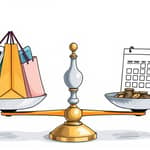
In an era where every investment decision is scrutinized for its environmental and social impact, the packaging industry stands at a pivotal crossroads. Traditional, plastic-heavy packaging firms are facing mounting headwinds—regulatory fines, consumer boycotts, and supply chain disruptions. Meanwhile, companies embracing eco-friendly innovations are experiencing unprecedented market momentum and growth. Investors must navigate this landscape with both foresight and conviction.
By understanding the environmental toll of unsustainable packaging, the accelerating shift in consumer preferences, and the evolving regulatory framework, you can protect your portfolio from hidden liabilities and position yourself among the leaders of the circular economy.
Every year, over 82 million tons of containers and packaging waste end up in U.S. landfills, representing nearly 28% of all municipal waste. Globally, eight million metric tons of plastic flow into the oceans annually—a figure that continues to climb as single-use plastics saturate our supply chains.
More than half of plastic waste originates from single-use items, with packaging alone accounting for 40% of that total. In industries such as pharmaceuticals, over half a billion tons of often non-recyclable packaging is generated each year, compounding landfill pressures and exacerbating environmental damage.
Governments across the globe are tightening the noose on unsustainable materials. The European Union’s Circular Economy Action Plan mandates rigorous recycling standards, while Germany’s Packaging Act imposes fees on certain non-recyclable containers. Countries like Thailand have already banned a range of single-use plastics, and extended producer responsibility (EPR) schemes are proliferating in North America and Asia.
Companies relying heavily on fossil-fuel-derived plastics face rapidly evolving regulatory landscape, escalating compliance costs, and potential fines. The shift towards mandatory recycling quotas and producer fees will further tilt the playing field in favor of firms that proactively adopt refillable, biodegradable, or fully recyclable solutions.
Consumer sentiment is a powerful force. Today, 71% of global shoppers actively choose products in sustainable packaging, and nearly 70% are willing to pay a premium for eco-friendly alternatives. In the food and beverage sector, 59% of consumers believe sustainability initiatives have been most successful, closely followed by beauty (42%) and cleaning products (35%).
The sustainable packaging market, valued at $292.71 billion in 2024, is projected to surge to between $423.56 billion and $491.75 billion by 2029, with compound annual growth rates ranging from 6.1% to 7.67%. A specific eco-friendly segment could nearly double, climbing from $9.67 billion to $19.19 billion by 2035 at a CAGR of 6.43%.
Companies slow to pivot away from unsustainable materials risk significant financial setbacks:
Major players such as Amazon and Google have committed to net-zero carbon packaging, underscoring the urgency. Investors must be wary: firms with high exposure to landfill-bound plastics may find themselves marginalized as corporate and consumer demands shift.
Conversely, the leaders in sustainable packaging represent compelling opportunities. Biodegradable, refill-friendly, and fully recyclable solutions are gaining traction in core industries like food and beverage, personal care, electronics, and healthcare. Public companies with robust ESG commitments are poised for outsized growth.
Europe leads the charge with a 36.7% revenue share in 2020, driven by strict regulations and elevated consumer awareness. The U.S. market, though historically a large waste producer, is rapidly adopting sustainable packaging due to both consumer demand and federal guidelines.
Navigating the packaging sector requires a keen eye for red flags. Here’s how to screen companies effectively:
By cross-referencing these criteria with financial performance, investors can pinpoint which firms are at risk of regulatory upheaval and which are primed for long-term growth.
The packaging industry’s transformation is more than a passing trend—it’s an inevitable shift toward responsibility and innovation. By championing sustainable packaging stocks and avoiding companies entrenched in wasteful practices, investors not only safeguard their portfolios but also contribute to global environmental resilience and health.
Your investment choices today will shape the markets of tomorrow. Embrace the circular economy, prioritize firms with clear sustainability roadmaps, and align your capital with the companies leading this essential green revolution.
References













